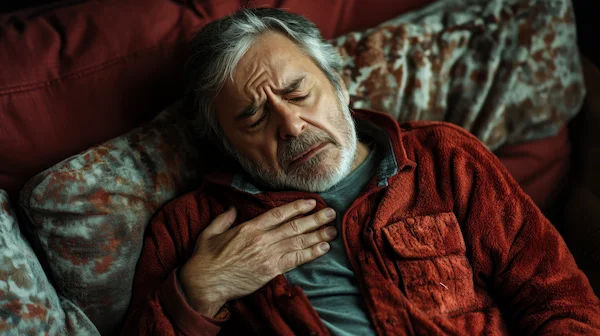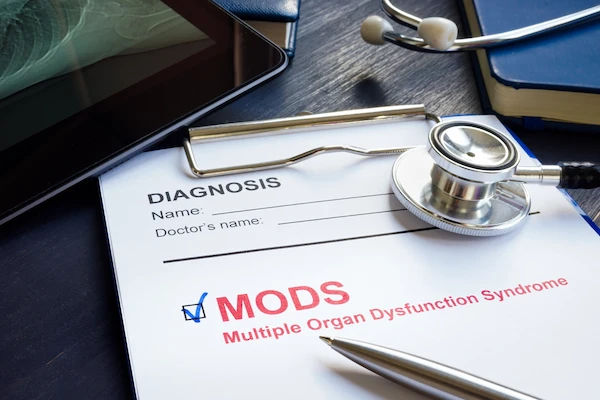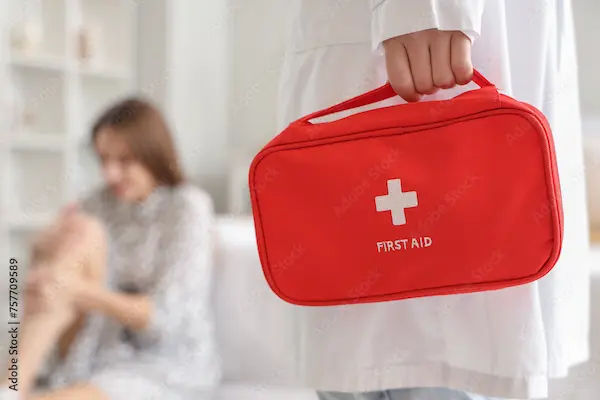Your Step-by-Step Guide to Performing Adult CPR in an Emergency
Learn how to perform adult CPR in an emergency, including step-by-step instructions, Hands-Only CPR, and AED use to save lives.


Introduction
When an adult suddenly collapses and stops breathing, every second counts. In a cardiac arrest, the heart stops beating effectively, and blood flow to the brain and other vital organs ceases. This is where Cardiopulmonary Resuscitation (CPR) becomes a literal lifeline. CPR is a simple yet powerful emergency procedure that anyone can learn. It combines chest compressions and rescue breaths to manually keep blood and oxygen circulating through the body until professional medical help arrives. This guide will walk you through the essential steps of performing adult CPR with confidence, demystifying the process and empowering you to act decisively in a critical emergency. We'll cover everything from the initial safety check to the proper compression technique, including the option of Hands-Only CPR if you are untrained or hesitant.
Understanding CPR: What It Is and Why It Matters
CPR isn't about restarting the heart on its own—that typically requires a defibrillator. Instead, its primary purpose is to be a "placeholder" for the heart's pumping action. By pushing hard and fast on the centre of the chest, you are manually circulating oxygen-rich blood to the brain, significantly increasing the person's chance of survival without brain damage.
The Critical First Few Minutes: Why Your Action is Vital
The statistics are stark. For every minute that passes without CPR or defibrillation after a sudden cardiac arrest, the victim's chance of survival decreases by 7–10%. After 10 minutes without intervention, survival is unlikely. Bystander CPR performed immediately can double or even triple a person's chance of survival. Your willingness to act, even with minimal training, is the most critical factor in the chain of survival.
Hands-Only CPR vs. Conventional CPR: What’s the Difference?
There are two main approaches for the public:
- Conventional CPR: Involves cycles of chest compressions and rescue breaths (mouth-to-mouth). This is the standard taught in certification courses and is ideal as it provides oxygen in addition to circulating blood.
- Hands-Only CPR: Involves continuous chest compressions without rescue breaths. The American Heart Association recommends this for untrained bystanders or those uncomfortable with giving rescue breaths. The rationale is that continuous compressions are easier to perform and remember under pressure, and the body still has some oxygen in the blood that can be circulated. For adults who collapse suddenly, Hands-Only CPR can be highly effective for the first few minutes.
Before You Start: The Initial Safety Assessment (The "Danger" Check)
Always ensure your own safety first. You cannot help someone if you become a victim yourself. Before approaching, quickly scan the scene for potential dangers like traffic, fire, electrical wires, or unstable structures. Ensure the area is safe for you to enter. Once you've confirmed it's safe, approach the person.
The Adult CPR Sequence: A Step-by-Step Guide
Follow these steps based on the "CAB" sequence (Compressions, Airway, Breaths) recommended by the AHA.
Consult a Specialist for the best advice
Step 1: Check for Responsiveness and Call for Help
- Tap and Shout: Tap the person firmly on the shoulder and shout, "Are you okay?" Look for any movement or response.
- Call for Help: If the person is unresponsive, immediately shout for someone nearby to call emergency services (e.g., 999, 112, or other local number). If you are alone, call emergency services yourself (putting them on speakerphone) before starting CPR, unless the person is a child or victim of drowning—then provide 2 minutes of CPR first.
Step 2: C for Compressions – The Core of CPR
This is the most critical part. Begin chest compressions immediately.
Finding the Correct Hand Position
Place the heel of one hand on the centre of the person’s chest, which is the lower half of the breastbone (sternum). Place your other hand on top of the first, interlacing your fingers. Ensure your shoulders are directly over your hands and your elbows are locked.
Mastering the Proper Compression Technique
- Push Hard: Compress the chest at least 2 inches (5 cm) deep for adults.
- Push Fast: Compress at a rate of 100 to 120 beats per minute. A good way to keep the rhythm is to push to the beat of the song "Stayin' Alive" by the Bee Gees.
- Allow Recoil: After each compression, allow the chest to return to its normal position completely without lifting your hands off the sternum. This allows the heart to refill with blood.
Minimise Interruptions: Keep compressions continuous with minimal pauses.
Step 3: A for Airway – Opening the Passage for Breath
Open the airway using the head-tilt/chin-lift manoeuvre. Place one hand on their forehead and gently tilt the head back. With your other hand, place your fingers under the bony part of the chin and lift it forward.
Step 4: B for Breathing – Delivering Rescue Breaths
- While keeping the airway open, pinch the person’s nose shut.
- Take a normal breath, make a complete seal over their mouth with your mouth, and give two rescue breaths, each lasting about one second. Watch for the chest to rise with each breath.
- If the chest does not rise, reposition the airway and try again.
- After the two breaths, immediately return to chest compressions, beginning another cycle of 30 compressions and 2 breaths.
- Continue cycles of 30 compressions and 2 breaths until professional help arrives and takes over, an AED is ready to use, the person shows signs of life (like breathing), or you are too exhausted to continue.
Using an AED (Automated External Defibrillator)
An AED is a portable device that can analyse the heart's rhythm and deliver an electric shock if needed. It is designed for use by the public.
How to Locate and Operate an AED Safely
As soon as an AED arrives, turn it on. It will provide clear voice and visual instructions. Expose the person’s bare chest, wipe it dry if wet, and attach the adhesive pads as shown in the diagram on the pads. Ensure no one is touching the person while the AED analyses the heart rhythm. If a shock is advised, the AED will tell you to press the shock button. Continue CPR immediately after the shock is delivered, following the AED's prompts.
Special Considerations and Common Challenges
What to Do If You're Untrained or Uncomfortable with Rescue Breaths
If you are not trained in CPR or are unsure, provide Hands-Only CPR. Simply call for help and push hard and fast in the centre of the chest. Dispatchers on emergency lines are often trained to talk you through it. Doing something is always better than doing nothing.
Addressing the Fear of Causing Injury
It is common to hear a popping or cracking sound from the ribs or sternum during compressions. This can be unsettling, but it is important to know that a broken rib is a survivable injury—cardiac arrest is not. Do not stop CPR because of this. You are trying to save a life. Good Samaritan laws in most places protect bystanders who act in good faith during an emergency.
Conclusion
Learning how to perform adult CPR is one of the most empowering skills you can have. It transforms you from a bystander into a potential lifesaver. While this guide provides a solid foundation, nothing replaces hands-on practice. Consider taking a certified course from a recognised organisation like the British Red Cross or AHA to build muscle memory and confidence. Remember, in a cardiac emergency, panic is the enemy, and knowledge is your tool. Your willingness to step forward and act, guided by these clear steps, can make the ultimate difference. If you have performed CPR on someone and they have revived, it is still crucial to have them evaluated by a medical professional. You can consult a doctor online with Apollo24|7 to discuss the next steps and ensure no underlying issues persist.
Consult a Specialist for the best advice
Consult a Specialist for the best advice

Dr. Mainak Baksi
General Practitioner
13 Years • MBBS , MD (MPH)
Howrah
Mainak Baksi Clinic, Howrah
(50+ Patients)

Dr. Shaik Abdul Kalam
General Practitioner
3 Years • MD (Physician)
Visakhapatnam
Apollo 24|7 Clinic - Andhra Pradesh, Visakhapatnam
(150+ Patients)

Dr. M L Ezhilarasan
General Practitioner
6 Years • MBBS
Visakhapatnam
Apollo 24|7 Clinic - Andhra Pradesh, Visakhapatnam

Dr. D Bhanu Prakash
General Practitioner
10 Years • MBBS, AFIH, Advanced certificate in critical care medicine, Fellowship in critical care medicine
Hyderabad
Apollo 24|7 Clinic, Hyderabad

Dr. Rajib Ghose
General Physician/ Internal Medicine Specialist
25 Years • MBBS
East Midnapore
VIVEKANANDA SEBA SADAN, East Midnapore
Consult a Specialist for the best advice

Dr. Mainak Baksi
General Practitioner
13 Years • MBBS , MD (MPH)
Howrah
Mainak Baksi Clinic, Howrah
(50+ Patients)

Dr. Shaik Abdul Kalam
General Practitioner
3 Years • MD (Physician)
Visakhapatnam
Apollo 24|7 Clinic - Andhra Pradesh, Visakhapatnam
(150+ Patients)

Dr. M L Ezhilarasan
General Practitioner
6 Years • MBBS
Visakhapatnam
Apollo 24|7 Clinic - Andhra Pradesh, Visakhapatnam

Dr. D Bhanu Prakash
General Practitioner
10 Years • MBBS, AFIH, Advanced certificate in critical care medicine, Fellowship in critical care medicine
Hyderabad
Apollo 24|7 Clinic, Hyderabad

Dr. Rajib Ghose
General Physician/ Internal Medicine Specialist
25 Years • MBBS
East Midnapore
VIVEKANANDA SEBA SADAN, East Midnapore
More articles from Emergency Care
Frequently Asked Questions
How do I know if someone needs CPR?
CPR is needed if an adult is unresponsive and not breathing normally (or only gasping). Gasping is not normal breathing and is a sign of cardiac arrest.
What is the correct CPR ratio for adults?
The standard ratio for one or two rescuers is 30 chest compressions to 2 rescue breaths.
Should I stop compressions to check for a pulse?
No. For untrained laypersons, it is recommended to skip the pulse check, as it can be difficult to find and wastes precious time. Focus on unresponsiveness and absence of normal breathing.
Can I get sued for performing CPR?
Most countries and states have Good Samaritan laws that protect bystanders who provide reasonable assistance in good faith during an emergency from legal liability.
What if I'm not strong enough to perform effective chest compressions?
Use your body weight, not just your arm strength. Position yourself directly over the victim, keep your arms straight, and push with your core. The depth is more important than brute force.




